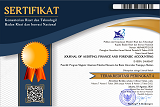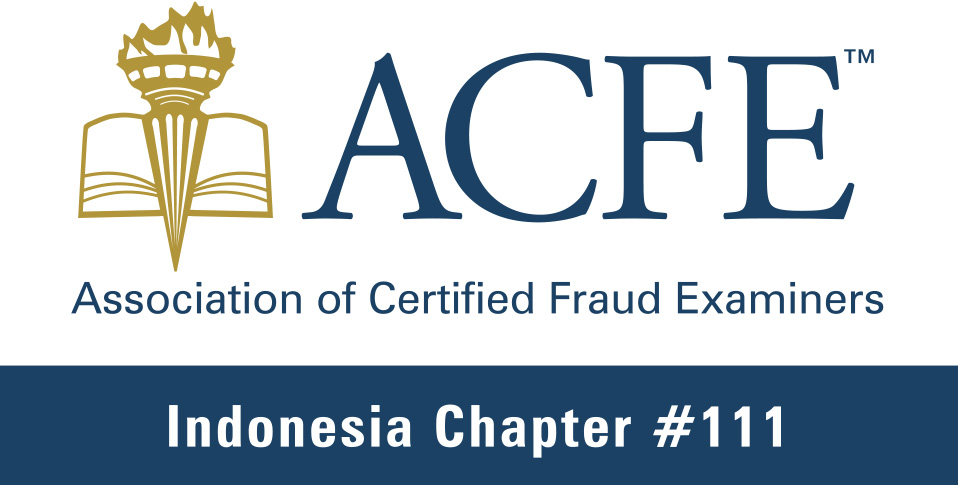PERAN DAN FUNGSI SATUAN PENGAWASAN INTERN DALAM PENCEGAHAN FRAUD PADA PERGURUAN TINGGI X
Abstract
The purpose of this research is to analyze and evaluate of the role and function of Internal Control Unit (SPI) PTN X on the prevention of fraud. The method of this research is qualitative approach with using case study. The unit analysis of this research is the internal control unit in University X. The analyze research used descriptive analysis.
The results show that the role and function of SPI has not been preventing fraud. This is because the process of supervision and auditing done by SPI have not led to five pillars of internal control recommended by COSO. Audit conducted by SPI is still compliance test and still financial management risk based. The low environment control and the lack of consciouseness of management against the role and function of SPI causes SPI does not capable to prevent fraud. Some other factors that cause SPI could not reach its maximum function are: the role conflict of SPI officers, budget that has not been independently managed, and the SPI position in OTK that has not been providing bargaining power and adequate control accessibility.
Keywords
Full Text:
PDFReferences
Abbott, L. J., Susan Parker, and Gary F. Peters, 2002. Audit Committee Characteristics and Financial Statement: A Study of the Efficacy of Certain Blue Ribbon Committee Recommendation.
Amrizal. 2004. Pencegahan dan Pendeteksian Kecurangan oleh Internal Auditor. http://
www.bpkp.go.id /unit /investigasi/ cegah_deteksi.pdf.
Association of Certified Fraud Examiners (ACFE). 2011. Fraud Examiners Manual. USA
Basrowi dan Sukidin. 2002. Metode Penelitian kualitatif Perspektif Mikro. Surabaya. Insan
Cendekia
Beasley, M. S., 1996. An Empirical Analysis of the Relation between the Board of Director Composition and Financial Statement Fraud. The Accounting Review. vol. 71 no. 4 (Oct.). Pp: 443-465.
Beasley M.S., J.V. Carcello, Hermanson and P.D. Lapides. 2000. Fraudulent financial reporting: consideration of industry traits and corporate Governance Mechanisms, Accounting Horizons. Vol. 14. Pp. 441–454 (December).
Bungin, Burhan. 2013. Analisis Data Penelitian Kualitatif. Jakarta. PT Rajagrafindo Persada. Burnaby, Priscilla, Martha Howe and Brigitte W. Muehlmann. Detecting Fraud in the Organization:
An Internal Audit Perspective. Journal of Forensic & Investigative Accounting. Vol. 3,
Issue 1
Chariri, Anis. 2009. Landasan Filsafat dan Metode Penelitian Kualitatif. Paper. Workshop Metodologi Penelitian Kuantitatif dan Kualitatif, Laboratorium Pengembangan Akuntansi (LPA), Fakultas Ekonomi Universitas Diponegoro Semarang, 31 Juli – 1 Agustus
Fikri, Ali, Made Sudarma, Eko Ganis Sukoharsono dan Bambang Purnomosidhi. 2011. Studi Fenomenologi Akuntabilitas Non Governmental Organization WWF (World Wide Fund for Nature). Jurnal Universitas Barawijaya. http://elibrary.ub.ac.id/bitstream/123456789/
/1/STUDI-FENOMENOLOGI-AKUNTABILITAS-NON-GOVERMENTAL- ORGANIZATION-WWF-%28WORLD-WIDE-FUND-for-NATURE%29.doc.
Herdiansyah, Haris. 2010. Metodologi Penelitian Kualitatif Untuk Ilmu-ilmu Sosial. Jakarta.
Salemba Humanika.
Asy’ari, Prasetyono, dan Haryadi JAFFA Vol.1 No.2 Oktober 2013
Indriantoro, Nur dan Bambang, Supomo. 1999. Metodologi Penelitian Bisnis Untuk Akuntansi dan
Manajemen. BPFE. Yogyakarta.
Intosai. 1992. Guidelines for Internal Control Standards for the Public Sector. http://www.idkk.gov.tr/Site Dokumanlari/Yayinlar/INTOSAI.pdf. Diakses 29 23 Oktober
Irjen Kemendikbud. 2010. Laporan Hasil Pengawasan dan Pemeriksaan Komprehensif Pada
Perguruan Tinggi Negeri X Tahun 2010.
_. 2011. Laporan hasil pengawasan dan pemeriksaan komprehensif pada
Perguruan Tinggi Negeri X Tahun 2011
_. 2012. Laporan hasil pengawasan dan pemeriksaan komprehensif pada
Perguruan Tinggi Negeri X Tahun 2012
Jurnal Online (http://www.itoday.co.id/ politik/perguruan-tinggi-negeri-candradimuka-koruptor)
diakses 12 Agustus 2012
Jurnal Transparansi Vol. 5 No. 1 Tahun 2010. Paradigma Pengawasan Intern dari Wachdog
Menuju Quality Assurance.
Matsumura, E. M., and Robert R. Tucker, 1992. Fraud detection: A Theoretical Foundation. The
Accounting Review, vol. 67 no. 4.
Mulyana, Deddy. 2001. Metodologi Penelitian Kualitatif. Bandung. PT Remaja Rosdakarya. Peraturan Pemerintah. PP Nomor 60 Tahun 2008 tentang Sistem Pengendalian Intern.
Peraturan Menteri. Peraturan Menteri Pendidikan Nasional Nomor 16 Tahun 2009 tentang Satuan
Pengawasan Intern di Lingkungan Departemen Pendidikan Nasional
_. Peraturan Menteri Pendidikan Nasional Nomor 47 Tahun 2011 tentang Satuan
Pengawasan Intern di Lingkungan Departemen Pendidikan Nasional
Reinstein, A., and Bayou, M.E., 1998. A Comprehensive Structure to Help Analyse, Detect and
Prevent Fraud.
Sekaran, Uma. 2006. Research Methods for Business. Buku 2 Edisi Empat. Salemba Empat.
Jakarta
Somantri, Gumilar Rusliwa. 2005. Jurnal Makara Sosial Humaniora. VOL. 9, NO. 2, Desember
: 57-65
Sugiyono, 2009, Metode Penelitian Kuantitatif, Kualitatif dan R&D. Bandung. Alfabeta.
Smith, R., Sam Tiras, and Stan Vichitlekarn, 1997. The Interaction Between Internal Control
Assessment and Substantive Testing in Audits for Fraud.
Tempo, Edisi 09 Nopember 2012, e-newspaper: www.tempo.com. Di akses 02 Februari 2013
The Institute of Internal Auditors. 2009. Guide to Internal Auditing, Second Edition. Wright, Patrick M., 2003. Restoring Trust: The Role of HR in Corporate Governance.
YPIA. 2008. Fondasi Internal Audit. Jakarta. Yayasan Pendidikan Internal Auditpengawasan dan pemeriksaan komprehensif pada Perguruan Tinggi Negeri X Tahun 2010
_. 2010. Laporan hasil pengawasan dan pemeriksaan komprehensif pada
Perguruan Tinggi Negeri X Tahun 2011
_. 2010. Laporan hasil pengawasan dan pemeriksaan komprehensif pada
Perguruan Tinggi Negeri X Tahun 2012
Wright, Patrick M., 2003. Restoring Trust: The Role of HR in Corporate Governance.
YPIA. 2008. Fondasi Internal Audit. Jakarta. Yayasan Pendidikan Internal Audit.
DOI: https://doi.org/10.21107/jaffa.v1i2.4005
Refbacks
- There are currently no refbacks.
Our Journal indexed by:
Our support tools using:



This work is licensed under a Creative Commons Attribution 4.0 International License.












